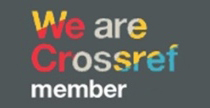ESTETIKA SENI KALIGRAFI ISLAM PADA KUBAH MASJID AGUNG AL-MUNAWWARAH KOTA JANTHO
DOI:
https://doi.org/10.51804/deskovi.v7i1.16585Keywords:
aesthetics, calligraphy, art, mosqueAbstract
Estetika yang mengkaji tentang keindahan akan menurun nilainya jika dikaitkan dengan kesenangan sensual atau duniawi. Sebaliknya, jika estetika dikaitkan dengan moral dan agama maka nilainya akan semakin tinggi. Kita dapat menemukan nilai estetika ini di dalam karya seni seperti karya Seni Kaligrafi atau Seni Khat. Seni Kaligrafi merupakan salah satu cabang seni rupa yang mampu memikat daya tarik seseorang dengan keindahan tulisannya. Dengan model Khat yang bermacam-macam Kaligrafi kemudian menjadi ornament bagi Masjid atau tempat-tempat suci lain dan menjadi bagian dari seni Arsitektur Islam. Macam-macam ukiran yang terdapat pada sisi dinding, tiang, bahkan atap Masjid menjadi Ikon ciri khas dari agama Islam. Kaligrafi mempunyai keistimewaan yang tidak dimiliki oleh karya seni lainnya. Khat murni lahir dari Seni Islam yang merupakan pengejawantahan firman Allah Swt yang suci. Tidak seperti karya seni lainnya yang mendapat pengaruh dari budaya non muslim seperti Musik, Arsitektur, Lukis dan lain sebagainya.
Indonesia is a country rich in diversity, be it religion, ethnicity and culture. Aceh is one of the areas in Indonesia where the majority of the population is Muslim. This makes the Aceh region have many mosques with various shapes and beauty. The author will analyze the aesthetics of calligraphy at the Al Munawwarah Mosque in Jantho City. This mosque has a unique shape with a semicircular building with a very large dome. This study aims to examine the background of each calligraphy found on the inside of the dome of the Al Munawwarah Mosque in Jantho City. The research method uses a qualitative method by collecting data, direct observation of the research object and conducting interviews with sources from the mosque administrators and creators, collecting photo documentation. The results of this study indicate that on the dome of the Al Munawwarah Mosque in Jantho City there are 2 (two) types of calligraphy, namely tsuluts khat and kufi khat because they are easy to apply, especially on curved areas such as the area on the dome of the mosque. Using a dominant green color is preferred in Islam. Consists of the Al-Fatihah letter at the top which means umbrella and the main points of the contents of the Al-Quran as a guideline in our lives as Muslims. At the foot of the dome there is the Verse of the Chair as a reminder of the oneness of Allah SWT. And between the two are placed Asmaul Husna.
Downloads
References
Akbar, Ali. (1992). Kaidah Menulis dan Karya-Karya Master Kaligrafi Islam. Jakarta: Pustaka Firdaus.
AR, H. S. (2007). Koleksi karya master kaligrafi Islam: Naskhi, Sulus, Diwani, Diwani Jali, Farisi, Kufi, Riq'ah. Darul Ulum Press.
AR, H. S. (2022). Seni Kaligrafi Islam. Amzah.
Feldman, E. B. (1971). Varieties of Visual Experience; Art as Image and Idea.
Hakim, A. L. (2020). KALIGRAFI ISLAM DALAM. 20(1), 55–67.
Junaedi, D. (2016). Estetika: Jalinan Subjek, Objek, dan Nilai. ArtCiv.
Kirom, S., & Hakim, A. L. (2020). Kaligrafi Islam Dalam Perspektif Filsafat Seni. Refleksi Jurnal Filsafat dan Pemikiran Islam, 20(1), 55-67.
Mujahidin, M. F. (2016). Pemikiran Kaligrafi Arab di Indonesia. Center of Middle Eastern Studies (CMES), 9(2), 179-188.
Sari, I. N., Lestari, L. P., Kusuma, D. W., Mafulah, S., Brata, D. P. N., Iffah, J. D. N., ... & Sulistiana, D. (2022). Metode penelitian kualitatif. Unisma Press.
Semiawan, C. R. (2010). Metode penelitian kualitatif. Grasindo.
Sirojuddin. (2014). Peta Perkembangan Kaligrafi Islam di Indonesia. Al-Turas, XX (1), 219–232.
Somad, A. (2006). Sejarah Perkembangan Seni Kaligrafi Islam di Indonesia (studi kasus kaligrafi dekorasi di dinding masjid agung al-azhar kebayoran barat jakarta).
Soraya, S. (2012). Nilai dan Makna Kaligrafi Arab pada Masjid Al-Atiq (Analisis Estetik). Students e-Journal, 1(1), 10.
SYAFI, A. G. (2017). Warna dalam islam. An-Nida', 41(1), 62-70.
Zuhri, A. (2017). Sejarah perkembangan kaligrafi arab pada masa pra-islam sampai kodifikasi al-qur’an (250-940 m).
Downloads
Published
How to Cite
Issue
Section
License
Copyright (c) 2024 DESKOVI : Art and Design Journal

This work is licensed under a Creative Commons Attribution 4.0 International License.
With the receipt of the article by DADJ Editorial Board and the decision to be published, the copyright regarding the article will be transferred to DADJ. The copyright transfer form can be downloaded here.
DADJ has the right to multiply and distribute the article and every author is not allowed to publish the same article that was published in this journal.

DESKOVI: Art and Design Journal is licensed under a Creative Commons Attribution 4.0 International License.
Under the following terms:
Attribution — You must give appropriate credit, provide a link to the license, and indicate if changes were made. You may do so in any reasonable manner, but not in any way that suggests the licensor endorses you or your use.






